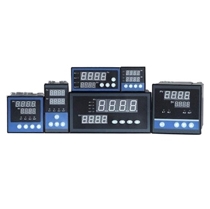A temperature controller is an electronic device designed to maintain a specific temperature within a given system or environment. It does this by monitoring the current temperature and making adjustments as needed to achieve the desired setpoint. This can involve heating or cooling actions, depending on whether the temperature needs to be increased or decreased. Understand their prices so you can make a better choice.
Temperature controllers components
There are different types of temperature controllers, each suited to specific applications:
On/Off Controllers: These controllers activate or deactivate the heating or cooling element when the temperature crosses a predefined threshold. They are simple and cost-effective but may lead to temperature fluctuations.
Proportional Controllers: These controllers adjust the output in proportion to the difference between the setpoint and the current temperature. They provide more precise control and reduce temperature swings.
PID Controllers: Proportional-Integral-Derivative controllers are the most advanced. They use a combination of proportional, integral, and derivative actions to achieve tight temperature control. PID controllers are commonly used in industries where precise temperature regulation is critical.
To help you make a better choice, here is a price list of sisco for you.
Temperature Controller Price
| Product picture | Product Name | SKU | Price |
 |
Freezer Temperature Controller, Dual Digital | SISCO-TC-F2D | $275.38 |
 |
Hot Runner Temperature Controller | SISCO-TC-HR | $216.35 |
 |
Hot Runner Temperature Controller, Multi Channel | SISCO-TC-HR-HRMC | $292.96 |
 |
PID Temperature Controller, Dual Digital | SISCO-TC-2D | $69.85 |
 |
PID Temperature Controller, Multi Channel | SISCO-TC-MD | $88.31 |
 |
Programmable Temperature Controller, ON-OFF/PID Control | SISCO-TC-P2D | $88.31 |
Note:The price list is for reference only. For more product parameter information, please go to the specific page. For discounts, please contact sisco.
Tips: How often should I calibrate my temperature controller?
- Annual Calibration: It's a common practice to calibrate temperature controllers annually. This frequency works well for many industrial applications where precise temperature control is necessary but not critical to the extent that more frequent calibration is required.
- Critical Applications: In critical applications such as laboratories, pharmaceutical manufacturing, or industries where product quality and safety are paramount, more frequent calibration might be necessary. Semi-annual or quarterly calibration is often advisable to ensure accuracy.
- Manufacturer Recommendations: Always refer to the manufacturer's guidelines and recommendations for calibration. They may provide specific information about the calibration frequency for your temperature controller model.
- Environmental Conditions: If your temperature controller is exposed to extreme conditions or experiences heavy usage, more frequent calibration may be necessary. Harsh environments can affect the accuracy of the controller over time.
- Changes in Operation: If you make significant changes to your temperature control system or the equipment it controls, consider recalibrating the temperature controller. Changes can impact the controller's performance.
- Internal Components: Over time, the internal components of the temperature controller, including the sensor, may wear or drift, leading to reduced accuracy. Regular calibration helps detect and rectify these issues.

